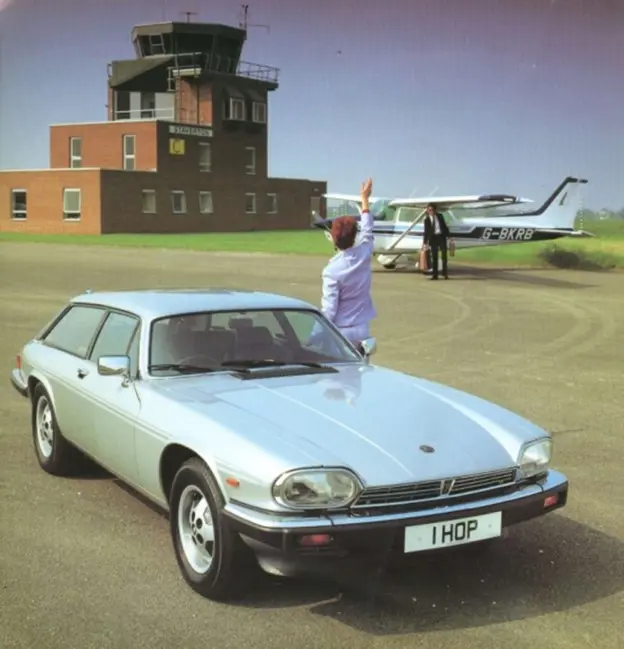40 YEARS OF THE JAGUAR XJ-S EVENTER
30 June 2023
Forty years ago, the well-heeled motorist searching for a British sporting three-door estate car had three options. Firstly, there was the Reliant Scimitar GTE; secondly, one could always opt for a specially tuned Range Rover. And thirdly, there was the new Jaguar XJ-S Eventer - the perfect shooting brake for that excursion to Goodwood. Of course, it helped if you could afford the conversion price of £6,950 - not including VAT.
The Eventer was the creation of Lynx Engineering, who previously built the incredibly appealing Spyder with an electrically powered fully lined mohair hood. Some 26 convertibles left their Sussex works between 1979 and 1983, but Jaguar’s imminent launch of the XJ-S 3.6 Cabriolet led them to change direction. Lynx’s co-founder Chris Keith-Lucas recently told Classic Cars magazine:
We got wind of the fact that Jaguar was planning to make something that looked exactly like what we’d been doing. We later discovered they even bought a couple of ours to take apart. It soon became apparent that the company wouldn’t take kindly to us continuing to build ours. We tipped a wink from somebody at Jaguar who said, ‘There’s a market for a Jaguar estate car. If I were you, I’d corner it’.

Lynx sourced various parts from a variety of cars for their first Eventer, which left the works in March 1982. A Toyota Celica provided the rear seat hinges, while the improbable donor car of the rear screen was a Citroën Ami Super Deluxe. Eventer No.1 served as a press and customer demonstrator, as well as a development car. It appeared at the Jaguar employees’ open day in August 1982, where their CEO John Egan was reportedly underwhelmed; “a bit like an upmarket Reliant Scimitar”.
However, Lynx continued with their plans for a 1983 launch. They initially hoped to build the Eventer under licence for Browns Lane, but this idea came to nothing. Instead, they converted a new or an existing XJ-S, with Jaguar honouring the original warranty on all unmodified components. The extensive changes included new rear side windows and an altered rear bulkhead. Early Eventers had a modified back section of the roof, with Lynx converting the entire top from car No. 18 onwards.
Further alterations included a repositioned fuel tank and back seat and modified rear suspension. The result was a shooting brake with a 6-foot load bay and 39 cu ft of space when the owner folded the rear seat. Transforming an XJ-S coupe into an Eventer might take 14 weeks, but longer timeframes were not unknown. Lynx built each car to a customer’s specific demands and would present them with a photo album detailing the process. In 1986 one Eventer driver even commissioned Tom Walkinshaw Racing Ltd. to give his XJ-S estate a 6.1-litre V12 engine.
And when Alan Henry of Motor Sport evaluated the Eventer in 1983, he raved:
On the road there was nothing untoward about the Eventer’s behaviour, no unwanted wind noise, and no diminution of the XJ-S’s unquestionable performance. Unlike so many estate car conversions over the years, the Eventer looks as though it has been conceived as a single, unified design, not as an afterthought. With sufficient load carrying capacity to please all manner of ‘outdoor types’ allied to the XJS HE’s other splendid virtues, it’s not difficult to see the Eventer having considerable sales success.
Some 67 Eventers departed the Lynx works, each now much sought after. Perhaps Mr. Henry encapsulated their appeal when he wrote: “the basic Eventer profile looks as though it could have sprung straight from the Jaguar drawing board”. And it is certainly a Jaguar that you can imagine 007 favouring when off-duty.
